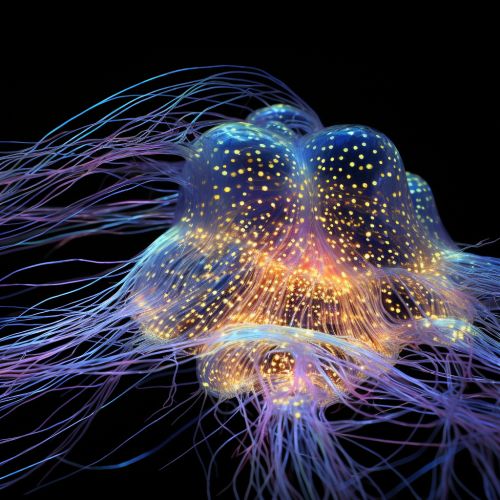Mechanisms of Synaptic Plasticity in Cephalopods
Introduction
Synaptic plasticity, the ability of the connections between neurons to change in strength, is a fundamental mechanism for learning and memory. In cephalopods, a group of marine animals including octopuses, squids, and cuttlefish, this process is particularly intriguing due to their advanced cognitive abilities and unique nervous system architecture.
Cephalopod Nervous System
Cephalopods possess the most complex nervous system among invertebrates, with a large brain and a network of peripheral nerves. The majority of their neurons are located in the peripheral nervous system, particularly in the arms. This decentralization allows cephalopods to perform complex tasks and react quickly to environmental changes.


Synaptic Plasticity in Cephalopods
Synaptic plasticity in cephalopods is primarily mediated by changes in the strength of synaptic connections, a process known as long-term potentiation (LTP) and long-term depression (LTD). These changes are driven by the activity of neurotransmitters, particularly glutamate, and their receptors, including NMDA and AMPA receptors.
Long-Term Potentiation (LTP)
LTP is a process where synaptic connections between neurons become stronger with frequent activation. In cephalopods, LTP is thought to be involved in learning and memory formation, particularly in tasks that require the recognition of spatial and visual cues.
Long-Term Depression (LTD)
Conversely, LTD is a process where synaptic connections become weaker with less frequent activation. In cephalopods, LTD is thought to play a role in forgetting or the removal of irrelevant information.
Role of Neurotransmitters
Neurotransmitters, particularly glutamate, play a crucial role in mediating synaptic plasticity in cephalopods. Glutamate activates NMDA and AMPA receptors, triggering a cascade of events that lead to the strengthening or weakening of synaptic connections.
Glutamate
Glutamate is the primary excitatory neurotransmitter in the cephalopod nervous system. It binds to NMDA and AMPA receptors, triggering the influx of calcium ions and initiating a series of events that lead to synaptic plasticity.
NMDA and AMPA Receptors
NMDA and AMPA receptors are ionotropic glutamate receptors that play a crucial role in synaptic plasticity. Upon activation by glutamate, these receptors allow the influx of calcium ions, which triggers intracellular signaling pathways leading to the strengthening or weakening of synaptic connections.
Implications for Learning and Memory
The mechanisms of synaptic plasticity in cephalopods have significant implications for understanding their advanced cognitive abilities. The ability to strengthen or weaken synaptic connections allows cephalopods to learn from their environment, remember important information, and forget irrelevant details.
Future Research Directions
Despite significant advancements, our understanding of synaptic plasticity in cephalopods is still in its infancy. Future research should aim to elucidate the molecular mechanisms underlying synaptic plasticity, the role of other neurotransmitters and receptors, and the implications for cephalopod behavior and cognition.
